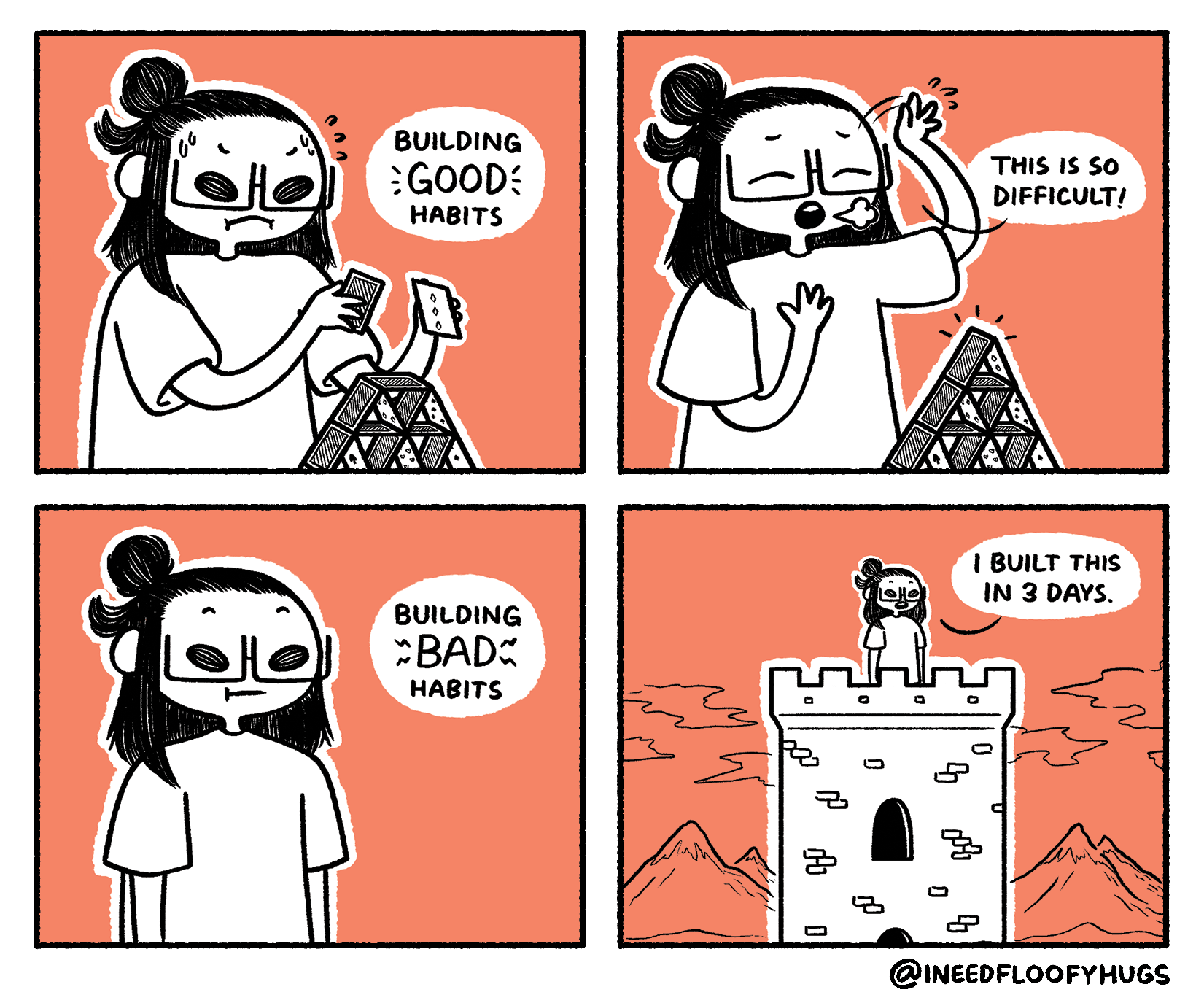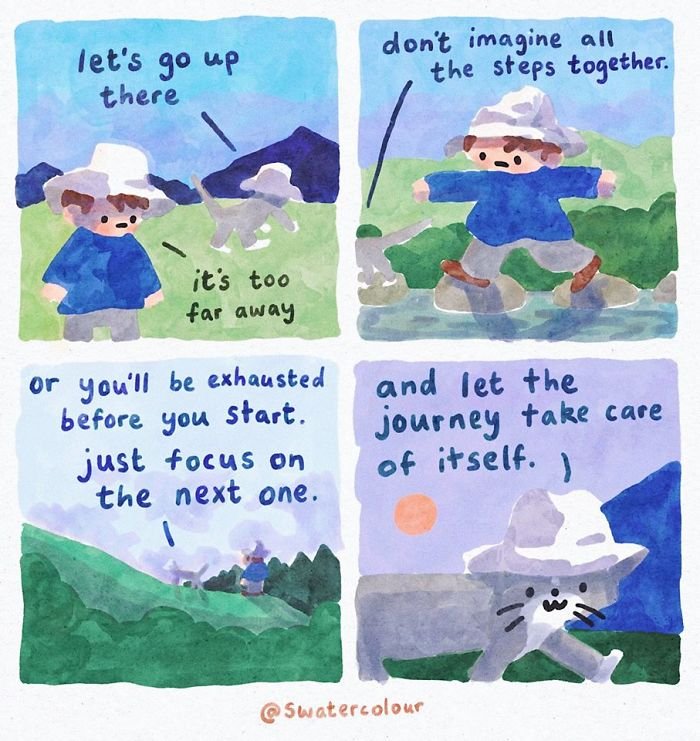In part one of our guide to change we looked at the ‘stages of change’ model, through the lens of an example ‘I want to feel more relaxed in the morning’.
In part two, we will consider five practical strategies to successfully facing change and how we can apply those change strategies in ways that benefit both our performance and our mental health.
As the navigators of our lives, we choose our destination and adjust our sails as we travel.
But invariably we will face unexpected storms that result in an unplanned change of direction, or, we will change our minds about where we want to go.
Here are five keys to change that we can keep in mind the next time we are either faced with change, or we decide to strive for change.
1) Paying the piper: preparing to change by considering whether change is worth it
All change comes with a cost. Whether you are embarking on a new path of study or career, learning to play the maracas, or developing your home patisserie-crafting skills, you will pay a price.
Before you commit to making a change, consider realistically what the cost will be and ask yourself if it’s worth it. This is part of the important third stage of change; preparing for change.
I like to imagine every choice in my life like a bridge to a new destination, and at every bridge, there lives a gatekeeper.
In Greek mythology, to cross into the greatest change of all (from death into life), a coin was placed under the tongue of the dead as a small payment to the ferryman, Charon, who took souls across the river Styx.
I prefer to use a more relevant to me, and less morbid, image. 80s children will understand.
For those who don’t know, Sir Didymus and his faithful steed Ambrosius, guard the bridge that is the only way out of the Bog of Eternal stench in the 1986 film Labyrinth. Heroine Sarah is eventually granted permission to cross the bridge simply by asking.
Whenever I am considering a change, I first ask myself if I both WANT to and CAN pay the cost. Be prepared to realise that actually, it’s not worth it.
That promotion or new hobby might be a nice thing to strive for in another life, but in this one, for whatever reason, you choose not to pay to cross the bridge, and you make the best of things as they are instead.
If you DO decide that the change is worth the cost, going through the process of analysing the cost will help you to identify the barriers to change and how you will overcome them.
In our example of being more relaxed in the morning, the cost includes giving up our stressed-morning-self, and whatever that self means to us and the people around us.
It might mean watching our co-workers change the way they see us: from someone who is online at 7am to someone who responds to emails after 9am.
It might mean that every now and again, we do miss an important update.
Maybe our partner and kids need to adjust to us being present for breakfast.
All of this might bring with it positives as well as negatives. In both cases we will come out of the experience different to how we went in.
Which brings me to point two.
2) Change involves grief.
Every new beginning requires an ending. Even when we see a change as positive, it means letting go of the person that we used to be, and the connections that person had.
Moving into our new, dream job, means changing relationships with our former co-workers.
Letting go of old habits such as smoking or drinking means a changing social relationship with the people we did those activities with.
How can we deal with this?
Acknowledge what you are letting go and allow yourself to grieve.
Accept that opposing feelings can exist simultaneously. It’s okay to be hugely excited about a new adventure and deeply sad about leaving something else behind.
Artist credit: Jang and Fox
In our example, we can be delighted at the prospect of carving out a small patch of time for ourselves in the morning before we ‘get on with our day,’ but we can simultaneously be fearful that this will have a change the way some people see us, and we can mourn the loss of ‘self’ that was the person who logged into work first thing.
3) Change takes practice. Walk the path.
“I’m told that the hardest part of being a teaching golf pro isn’t helping adult golfers develop a good golf swing. It’s getting them to stop using a bad one.” Seth Godin.
Seth is describing the power of habits which arise from well-worn neural circuits.
Our brains are made up of billions of connections between neurons, sending messages at lightening speed to make us think or act.
When we are children, more than 1 million new neural connections form every second, as we learn to crawl, run, cry out when we are afraid or tired, pick up a spoon to eat, or pull away from a hot stove or angry dog.
The more often we use each neural circuit, the quicker and more effectively those messages travel. That’s why when you see kids learning new skills, the first attempts are clumsy, but the more they practice, the better those skills develop and the more embedded those neural pathways become.
Once a behaviour or thought pattern is truly ingrained, it is very difficult to change because we are not simply laying down new neural circuits, we are fighting against our every instinct to travel down the old ones.
Artist credit: War and Peas - once an ingrained behaviour / thought pattern is triggered, it’s hard to stop.
Have you ever tried learning to use chopsticks, and found yourself instinctively using your chopsticks as you would a pen, or a spoon?
Changing existing neural connections is extremely difficult because we are hard-wired to act on neural messages as soon as they are triggered. This is a protective ability. Imagine how difficult life would be if you had to consciously think your way through every task as if you were learning it for the first time !
Rather than focusing on stopping old thoughts or behaviour, focus instead on building entirely new pathways. I imagine myself physically walking a path when I am purposefully creating new neural circuits. (I use a path I know - for me, the clifftop walk along the sea to Orakawa Bay, at the northern end of Waihi Beach. Try using a place you know to make this feel more real).
Identify triggers for the current behaviour that you want to change, then create new triggers, attached to the new behaviour.
Example: You want to feel more relaxed in the morning.
identify that reaching for your phone first thing and seeing notifications is a stressor. Picking up your phone triggers you to think about your work day.
identify what triggers you to pick up your phone first thing in the morning. Having it next to your bed? Hearing your alarm?
plan a new behaviour that reflects the change you want to happen (being more relaxed in the morning), for example, getting out of bed to turn the kettle on, because the process of making and drinking a morning cuppa makes you feel relaxed.
attach a trigger to your new behaviour that is different to the trigger to your old behaviour, for example, use a vibrating wrist alarm instead of your phone (I use this one).
now comes the hard part - enact your desired behaviour in response to your planned trigger OVER AND OVER again. The more frequently you do it, the more embedded your neural connection will become, so eventually, as soon as your wrist alarm goes off, you will fly out of bed and flick the kettle on without even thinking about what you’re doing.
Artist credit: I Need Floofy Hugs
4) Go dope for dopamine
Reward systems govern human and animal behaviour. We do stuff, or avoid it, in part because we feel either positively or negatively reinforced by the outcome.
One of the rewards for thoughts and behaviours that we find compelling is dopamine - a lovely little chemical in our brain that makes us feel good. Dopamine plays a role in how we feel pleasure and motivation.
Dopamine and its input into human behaviour is an enormous topic and not one that I can summarise in a few paragraphs within a blog post. You can find reliable information about Dopamine on the Huberman Lab podcast, compiled by neuroscientist Dr. Andrew Huberman.
Tools to manage dopamine and improve motivation and drive
Written summary of tools and more detail about dopamine here.
A couple of really interesting key takeaways from the above links (credit to Dr. Huberman):
The brain does not know what an ‘external reward’ is. The brain only knows associations with chemical releases.
Therefore, try to associate ‘winning’ with the effort process itself, so that your brain associates the effort with chemical release rather than the reward (in other words, so that effort becomes its own reward).
Examples of this would be enjoying reading on a topic that you are studying or looking forward to going to the gym because you enjoy your session.
“Telling yourself you are moving towards your goals is stimulator of dopamine release.” Thinking positively may sound cliché but it works.
Notice when you take a step towards change and tell yourself well done.
Artist credit: Grant Snider this is a comic about the creative process. To use dopamine to encourage ourselves to spend more time on the creative process, we would attach a reward trigger to the process itself. If we can find reward in the process (rather than the outcome) we will be more likely to continue doing the process.
5) Change your behaviour by controlling your environment
This is very closely related to ‘walking the path’ of building those new neural connections.
By controlling our environment, we control our triggers - both eliminating or reducing the triggers we want to avoid, and adding or enhancing the triggers we want to take advantage of.
If checking our phone first thing in the morning is a trigger for us to feel stressed, and also, to begin working immediately rather than choosing a more relaxing start to our day, then we can control that by leaving our phone in another room when we get into bed.
If part of our new relaxing morning includes movement, we can control our environment by laying out our walking shoes and clothes in a convenient place.
Controlling your environment to change your behaviour is a wonderful tool because it doesn’t involve any self talk which can easily descend into unhelpful thoughts. Imagine yourself like a sheep being herded - you don’t tell the sheep where to go, you change it’s path.
Change is hard. It’s going to happen to us in life, whether we choose it or not.
In our next blog, we will look at how we can support our mental health when change happens to us, even when that change is unwanted.
Artist credit: SWatercolour
***
Need help Managing Change, or assessing and improving Workplace Mental Health?
Glia is here for you.
We are a team of highly experienced registered Psychologists who are experts in the world of work.
Contact us for Psychosocial Risk Assessments, Burnout Recovery Coaching, and virtual or in-house workshops to support mental health in the workplace and reduce the impact of stress, anxiety and other psychosocial hazards at work.
Follow us on LinkedIn for our regular, and FREE educational LinkedIn Lives with special expert guests covering Psychosocial Risk Management, Stress and Burnout Management, Mindfulness, Mental Fitness training, Workplace Mental Health and compliance.
Follow the writer, Ngaire Wallace, on LinkedIn here.







